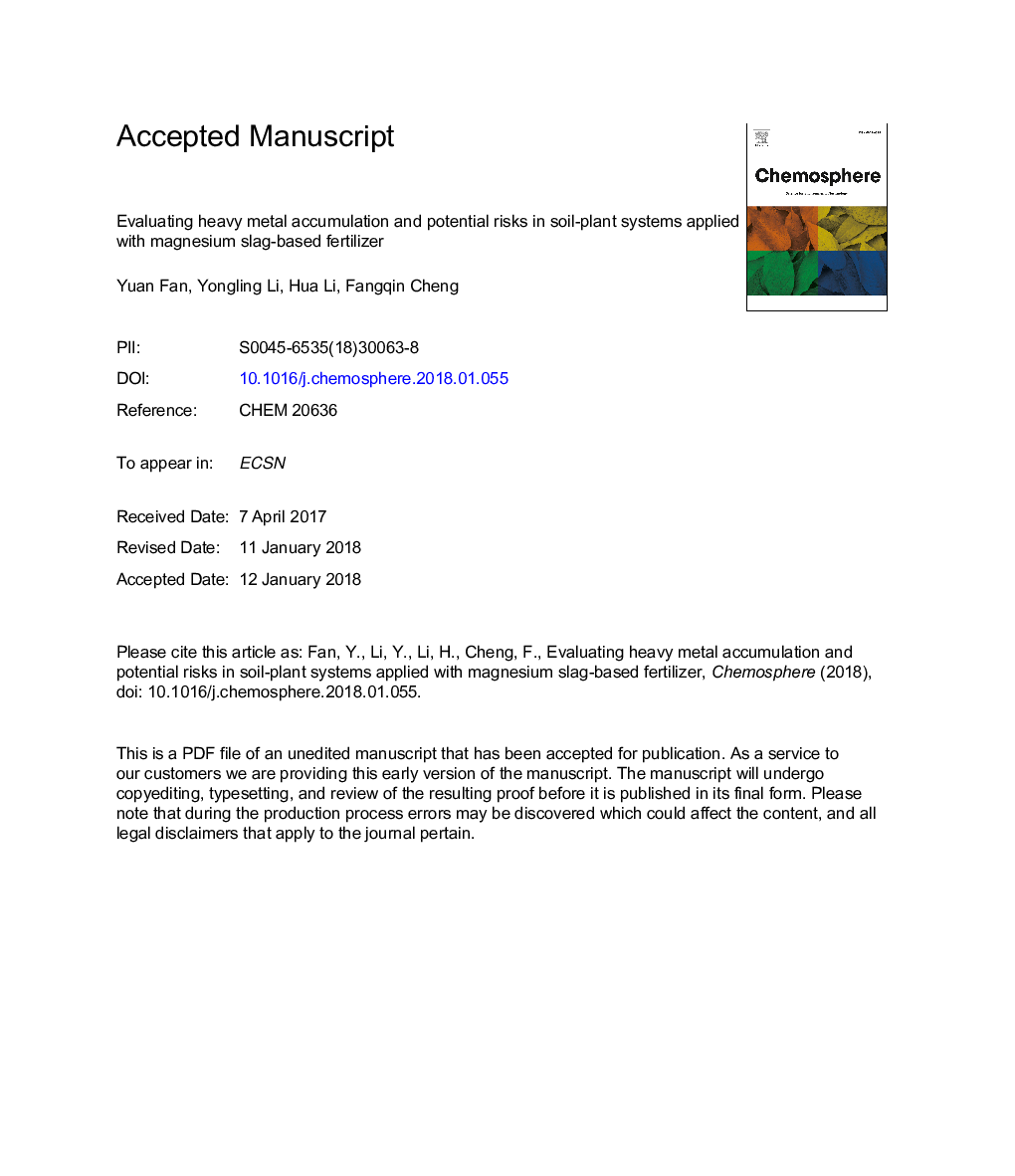| Article ID | Journal | Published Year | Pages | File Type |
|---|---|---|---|---|
| 8852010 | Chemosphere | 2018 | 30 Pages |
Abstract
Two typical Chinese soils including southern paddy soil and northern calcareous soils were used in a pot experiment to evaluate the effect of magnesium slag-based fertilizer on heavy metal accumulation and health risk in soil-plant system. The results indicated that magnesium slag-based fertilizer promoted the growth of maize plants. The concentrations of Cr, Cu, Pb and Zn in both soils amended with magnesium slag-based fertilizer were qualified for the second level criterion of Standard of Soil Environment (GB 15618-2009). Accumulation of HMs exhibited partitioning characteristics in maize plants, i.e. Cr and Cu were accumulated mainly in root and leaf parts while Pb was concentrated in roots. The order of transfer factors (TF) of HMs in different plant organs was ordered as follows: rootâ¯>â¯stemâ¯>â¯leafâ¯>â¯grain. It indicated that less HMs were accumulated in the grain compared with that in other organs. The estimate daily intakes and total target hazard quotient of HMs including Cr, Cu, Pb, and Zn were less than 1, indicating that consumption of maize grain was at low risk and would not cause non-carcinogenic risks. From the above results, application of magnesium slag-based fertilizer at present level would not cause pollution risk for maize plants cultivated in two Chinese soils.
Related Topics
Life Sciences
Environmental Science
Environmental Chemistry
Authors
Yuan Fan, Yongling Li, Hua Li, Fangqin Cheng,
